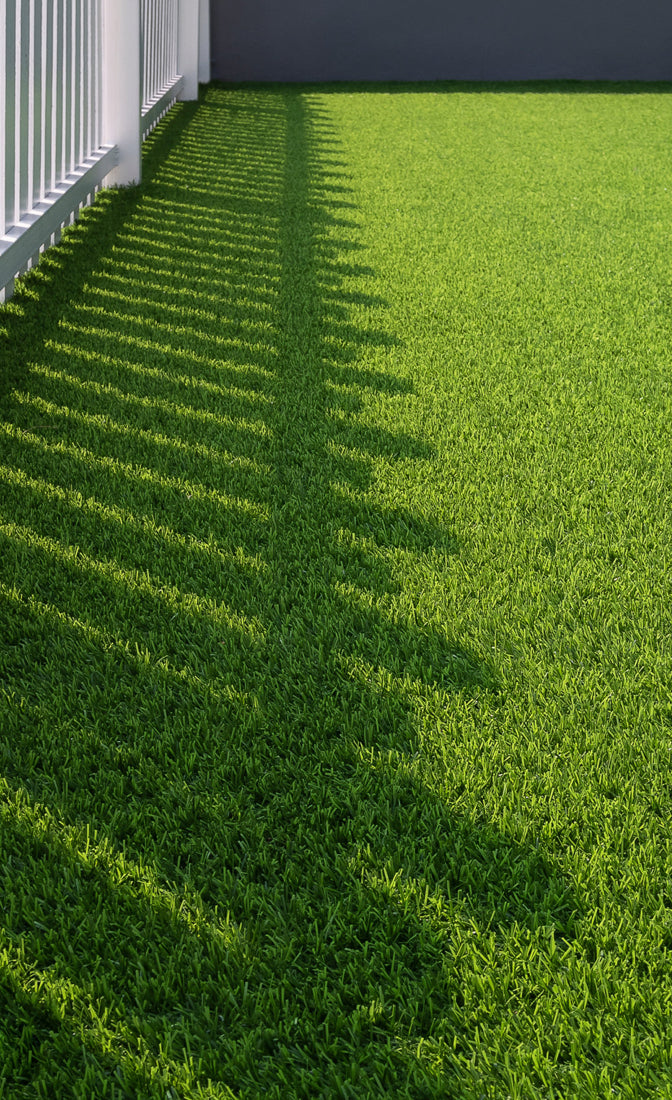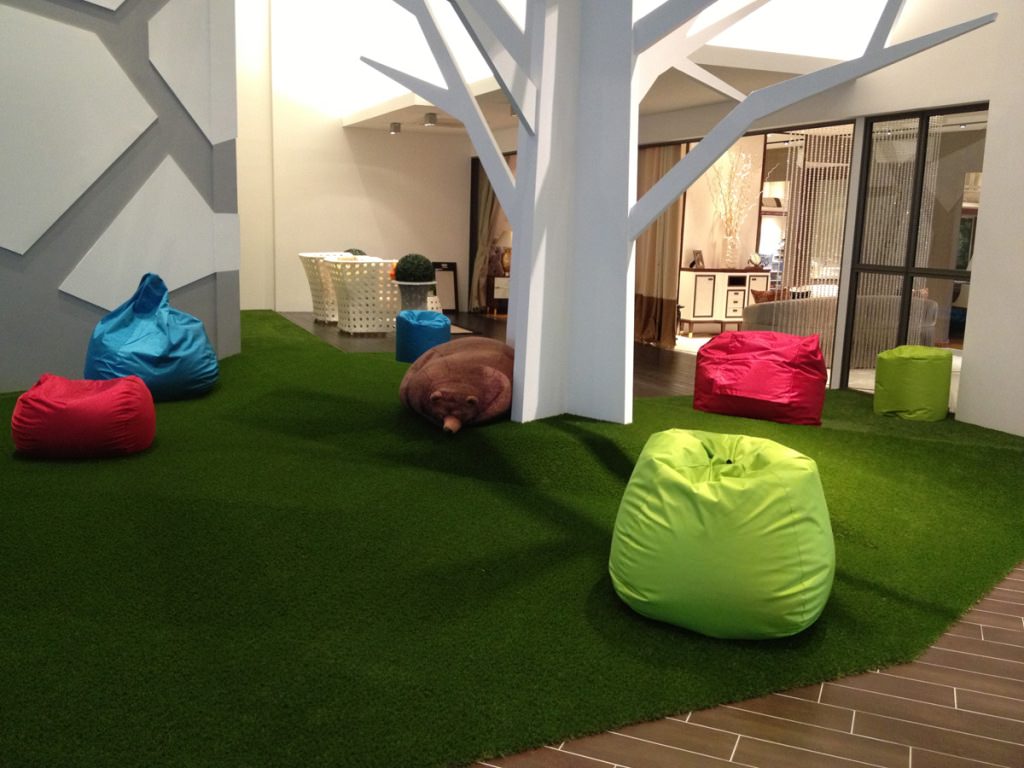Confused about which type of artificial grass is right for your home, school, or commercial project? You’re not alone. With so many options available, it can feel overwhelming to figure out what suits pets, kids, sports, or decorative use.
This guide breaks down the different types of artificial grass by material, specifications, and application, so you can make a confident choice and get the most value from your investment.
What Is Artificial Grass Made Of?
Artificial turf combines several key components that work together to look and feel like natural grass.
Key Components: Fibres, Backing, Infill
Fibres (Blades)
These are the “grass” blades, usually made of synthetic polymers, designed to mimic the look and feel of natural grass.
Backing
The backing holds the fibres in place and allows water to drain through.
Infill
Sand, rubber, or organic materials are brushed into the turf to keep fibres upright, add cushioning, and aid drainage.
Common Polymers: Nylon, Polyethylene, Polypropylene, Hybrids
|
Material |
Pros |
Cons |
Best For |
|
Nylon |
Extremely durable; holds shape; heat-resistant |
Most expensive; firmer underfoot |
High-traffic areas, rooftops, commercial use |
|
Polyethylene |
Soft and natural-looking; good durability |
Slightly less resilient than nylon |
Yards, pet areas, playgrounds |
|
Polypropylene |
Affordable; lightweight |
Least durable; warps under heat |
Low-traffic, decorative use |
|
Hybrid Blends |
Balanced performance; combines benefits |
Quality varies depending on blend |
General-purpose; homeowners wanting comfort + durability |

Core Specs That Affect Feel, Look & Durability
Artificial turf comes with specifications that directly impact its realism, comfort, and longevity. Here’s what to focus on:
Appearance & Thickness (Pile Height + Density)
-
Pile height = blade length. Taller grass (35–45mm) looks lush but may flatten; shorter grass holds shape and is easier to clean.
-
Density = how tightly packed the fibres are. Denser turf looks fuller, feels softer, and withstands traffic better.
Drainage & Backing (Why It Matters for Rain and Pets)
Good drainage keeps turf dry and prevents odours. Look for permeable backing with fast drainage rates—essential for pet-friendly grass or rainy climates.
Infill Types (And How They Impact Feel & Odor)
-
Silica sand – Affordable, helps blades stand up.
-
Rubber infill – Cushioned, but retains heat and odour.
-
Organic infills – Cooler and pet-friendly, but require more upkeep.
Heat & UV Protection (Will It Fade or Get Too Hot?)
Choose turf with UV-stabilised fibres to resist fading. Lighter colours and organic infill reduce heat, keeping turf up to 20% cooler in direct sun.
Types of Artificial Grass by Application
The best turf depends on where and how you plan to use it.
Residential & General Landscaping Turf
Perfect for front yards, backyards, and garden makeovers. Natural-looking fibres with medium pile height deliver beauty without mowing or watering.
➡ Explore our landscape grass range.
Pet-Friendly Turf
Built for durability and hygiene. Drains quickly, resists odours, and withstands digging or heavy play.
Tip: Avoid rubber infill—it traps heat and odour.
➡ See pet turf options.
Playgrounds & Kids / Safety Turf
Soft, safe, and shock-absorbing. Usually paired with underlay to meet fall safety standards.
Tip: Ask for turf rated to ASTM F1292 for compliant playgrounds.
➡ Browse playground turf.
Sports Fields & High-Traffic Areas
Designed for performance and resilience. UV-stable, durable fibres handle running, sliding, and high use.
➡ Check our sports turf.
Putting Greens & Golf Surfaces
Low-pile, high-density turf for smooth ball roll and realistic play. Great for both home practice greens and professional facilities.
➡ View golf putting grass.
Rooftops, Balconies & Vertical Green Walls
Lightweight and drainage-friendly, making them perfect for urban living. Adds greenery to spaces with limited yard area.
➡ Learn more about roof terrace grass and balcony grass.
Indoor Applications
Artificial grass can also enhance gyms, playrooms, and offices.
➡ Get inspired with our indoor turf ideas.
How to Choose the Right Artificial Grass for You
Feeling stuck? Use this step-by-step guide:
Step 1: Define the Primary Use Case & Traffic Level
-
Kids, pets, sports, or landscaping?
-
How much daily wear will it get?
Tip: High-traffic = nylon or dense polyethylene turf.
Step 2: Match Material & Specification to Use
-
Tall, lush blades for landscaping.
-
Short, dense blades for golf or playgrounds.
Step 3: Consider Climate, Sun & Shade Exposure
-
Hot, sunny climates need UV-stable, heat-resistant turf.
-
Shaded areas benefit from shorter pile height for easier cleaning.
Step 4: Installation & Drainage Considerations
-
Flat surfaces need quality drainage backing.
-
Sloped surfaces may need professional prep.
Step 5: Maintenance & Longevity Expectations
-
All turf is low-maintenance but still requires cleaning.
➡ See our artificial grass cleaning guide.
Step 6: Take the Guess Work Out
Not sure what’s best? That’s where we come in. Aloro’s experts can guide you to the right turf for your needs.
➡ Contact us today.





